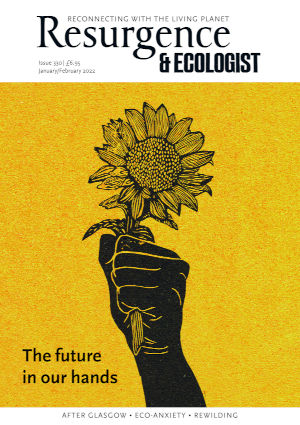Unlike fictional people in a novel or real-life subjects in non-fiction, the colourful cast of characters who star in Jonathan Drori’s Around the World in 80 Plants might well be centre-stage in an English farm, field or garden.
Nettle. Rhododendron. Clover. Barley. Hop. Sphagnum.
The same could be said for plants featured from Southern Europe, including saffron crocus, tomato, artichoke, mandrake, and more. In this botanical journey, the reader is transported to different regions of the world for engaging and rich portraits of plant life.
Drori’s book is beautiful, with quality paper and fine font, a perfect gift for any gardener. It follows his best-selling and widely translated Around the World in 80 Trees (2018), also published by Laurence King. Finely illustrated in subdued hues – burgundy reds, mustard yellows, slate blues, olive greens – by Lucille Clerc, combining drawing and screen-printing, Around the World in 80 Plants has the satisfying feel of a short-story collection. In each of the two-page profiles, much ground – plant science as well as human history and culture – is packed. It is a book of broad strokes, making it ideal to read over coffee while gazing through the window at your garden.
Drori is a trustee of the Eden Project and Cambridge Science Centre and an ambassador for the World Wide Fund for Nature, and he was a trustee at the Royal Botanic Gardens, Kew for nearly a decade. He has a particular interest in economic botany, ethnopharmacology, and plant genetic resources, and has been a part of botanical expeditions.
Drori’s narrative non-fiction conveys factual information in often striking and vivid writing. His prose is dense, marked by scientific pop and spark as well as poetic lyricism. In his essay on Spanish moss Tillandsia usneoides, he writes: “An eerily iconic plant of the swampy Southern states, it has skeletal, finger-length leaves that curl together into chains, forming elongated grey-green curtains that drape from trees and telephone wires.” Of cannabis, or hemp, Cannabis sativa, he writes that it has a “dewy sparkle” and is “raffish and unfussy about its habitat”. Of nutmeg Myristica fragrans, “Girdling the shiny nut is a succulent, lacy layer, an utterly sensual blood-red aril, or seed covering, which is itself surrounded by a fleshy husk.”
Ancient to modern uses of plants, alongside places of origin, add cultural and historical backstories. The book is a quick and satisfying survey, to be picked up and put down, to be inspired by, and to tickle your imagination. What it lacks in depth, it makes up for in breadth. Take as contrast Michael Pollan’s 2021 book This Is Your Mind on Plants. Three plants are studied in depth in a first-person account – opium, caffeine, and mescaline – and the impact on the reader is more lasting. I suggest reading the two books one after the other.
Around the World in 80 Plants, for the general reader, is an inspiring taster representing, Drori writes, a fraction of diverse botanical life. His strong introduction reminds us about the vital role plants play in the complex web of life. “Our futures depend on these ecosystems and the relationships between them, but sadly, biodiversity is under threat from rampant human consumption, our agricultural practices and climate change.” Drori wants us to enjoy the remarkable plants he profiles, “while sparing a thought for the hundreds of thousands of others that also warrant our attention and, often, our protection”.
Enjoyed over your ethically sourced cup of morning Coffea arabica, the book is an invitation to see the world as a garden we must all tend with care.







